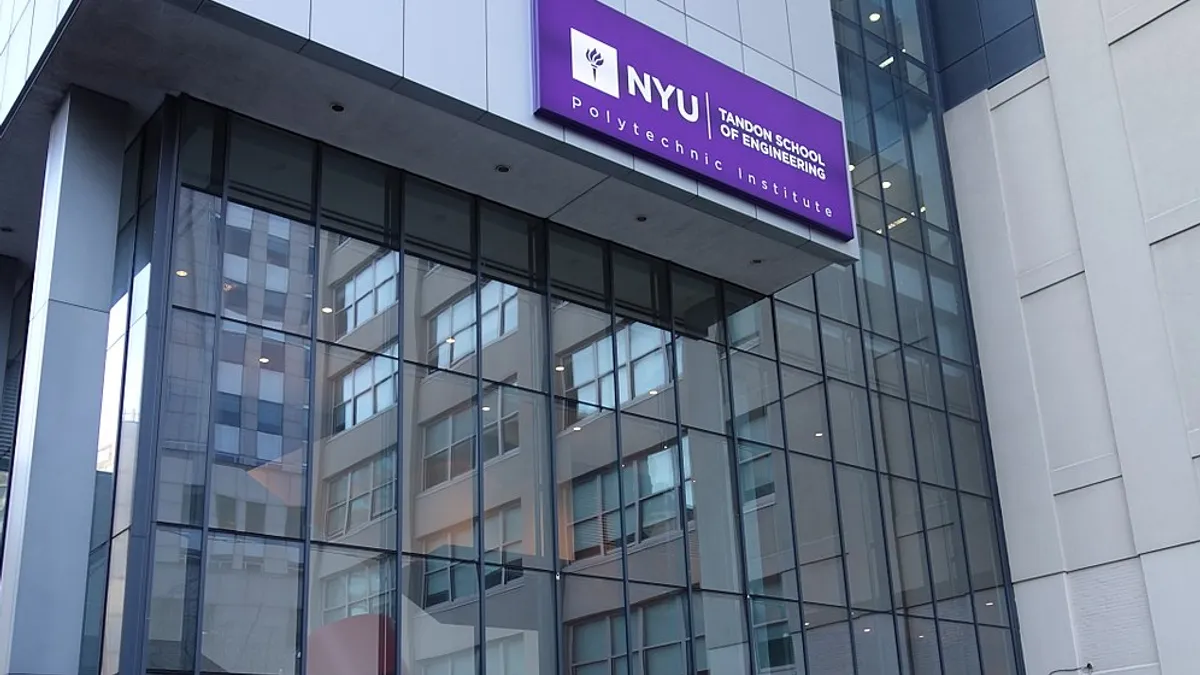Dive Brief:
- The New York University Tandon School of Engineering has announced the creation of the Institute of Design and Construction (IDC) Innovations Hub, which will promote efficiency, sustainability and safety within the industry and help executives find solutions to the issues that can make a project late or over budget.
- Staff and researchers at the hub will help members solve design and construction issues; provide experts for consultations; offer seminars on a wide range of topics, from leadership to material selection, and provide other training; offer a chance for members to network across industry sectors and serve as a national clearinghouse for information.
- Engineer Michael Horodniceanu, who last served as president of New York City’s Metropolitan Transportation Authority Capital Construction, will lead the IDC Innovations Hub as chairman. Horodniceanu, who received his doctorate at NYU, said, "It is such a thrill to be back at NYU Tandon to share my experience with colleagues and students that was gained in both the private and public sectors during a career that has spanned four decades."
Dive Insight:
Once notoriously hesitant to experiment with new technology, construction companies are finally making an impressive effort to catch up to other industries that have been able to experience the benefits of automation, cloud connectivity and agile business practices.
In its latest look at construction technology and the infrastructure sector, McKinsey & Co. found that the clusters “gaining the most traction" are those containing 3D printing, modularization, offsite fabrication and robotics; digital twin technology (i.e. drone inspections, laser scanning and virtual learning); artificial intelligence (AI) and analytics (i.e. machine learning and predictive asset performance); and supply chain optimization through new equipment, materials, labor and professional marketplaces. These are also the areas the consultancy said should experience the most growth in the near future.
Purveyors of construction technology have also been key in spurring innovation and collaboration. Oracle Construction and Engineering launched an innovation lab just outside Chicago in Deerfield, Illinois, where visitors can try out connected devices, autonomous vehicles, drones, augmented reality and artificial intelligence gadgets.
A few years ago, construction software staple Autodesk also took additional steps into the world of construction collaboration and opened its BUILD (Building, Innovation, Learning and Design) project in Boston. The 70,000-square-foot space features a 34,000-square-foot lab where contractors and industry innovators can experiment with processes and equipment — including six industrial robots and a five-ton bridge crane — free of charge, expected to cover only the expense of the materials they use and rent.












